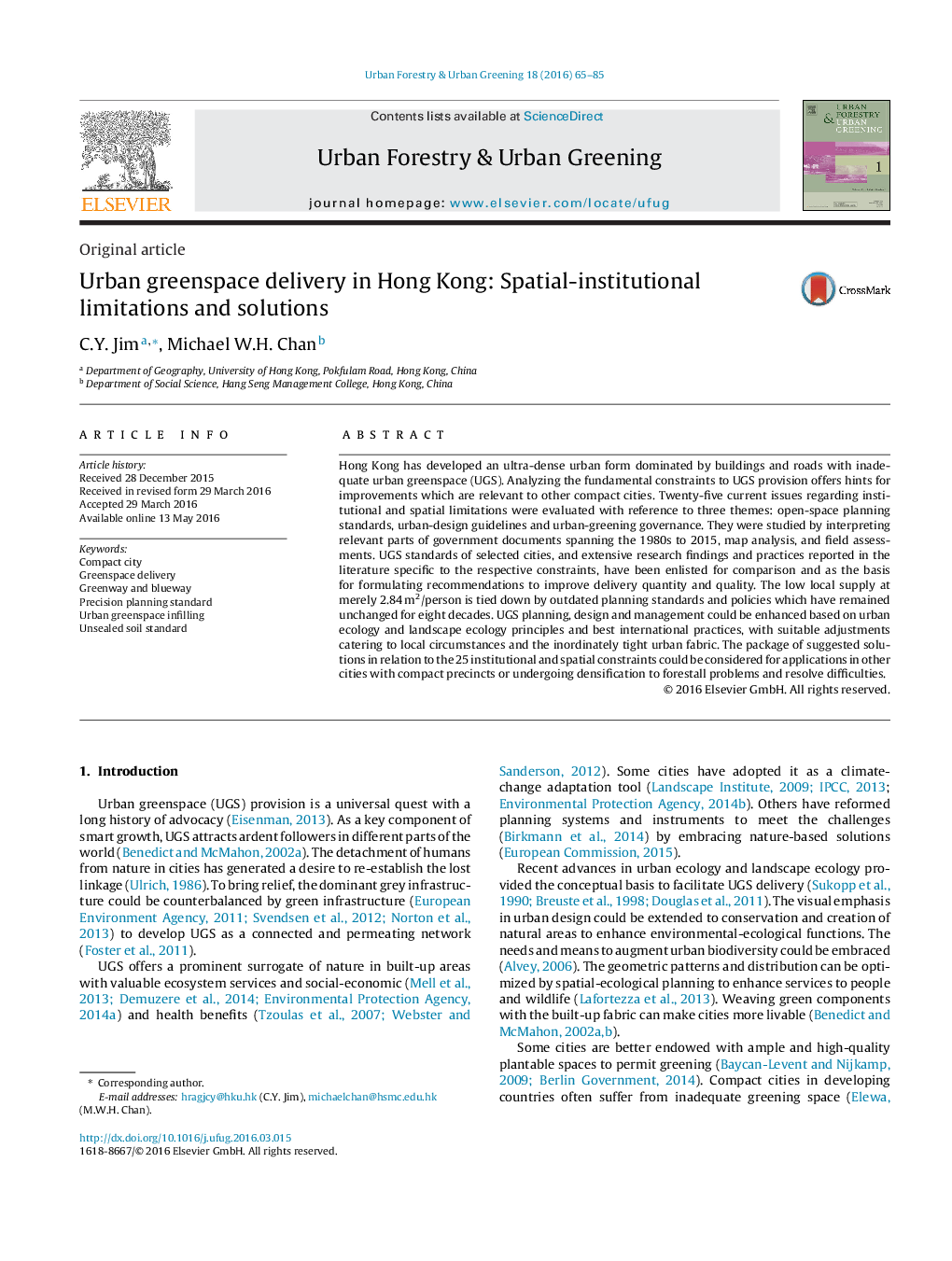| Article ID | Journal | Published Year | Pages | File Type |
|---|---|---|---|---|
| 93939 | Urban Forestry & Urban Greening | 2016 | 21 Pages |
•Hong Kong’s compact urban form has gravely limited urban-greenspace (UGS) provision.•Multiple spatial and institutional constraints have straitjacketed UGS improvements.•Low and outdated planning standards for open space constitute the primary obstacle.•Inadequate urban design guidelines with confined scope have hindered UGS upgrading.•Dispersed governance, legal vacuum and little citizen engagement impose restrictions.
Hong Kong has developed an ultra-dense urban form dominated by buildings and roads with inadequate urban greenspace (UGS). Analyzing the fundamental constraints to UGS provision offers hints for improvements which are relevant to other compact cities. Twenty-five current issues regarding institutional and spatial limitations were evaluated with reference to three themes: open-space planning standards, urban-design guidelines and urban-greening governance. They were studied by interpreting relevant parts of government documents spanning the 1980s to 2015, map analysis, and field assessments. UGS standards of selected cities, and extensive research findings and practices reported in the literature specific to the respective constraints, have been enlisted for comparison and as the basis for formulating recommendations to improve delivery quantity and quality. The low local supply at merely 2.84 m2/person is tied down by outdated planning standards and policies which have remained unchanged for eight decades. UGS planning, design and management could be enhanced based on urban ecology and landscape ecology principles and best international practices, with suitable adjustments catering to local circumstances and the inordinately tight urban fabric. The package of suggested solutions in relation to the 25 institutional and spatial constraints could be considered for applications in other cities with compact precincts or undergoing densification to forestall problems and resolve difficulties.
